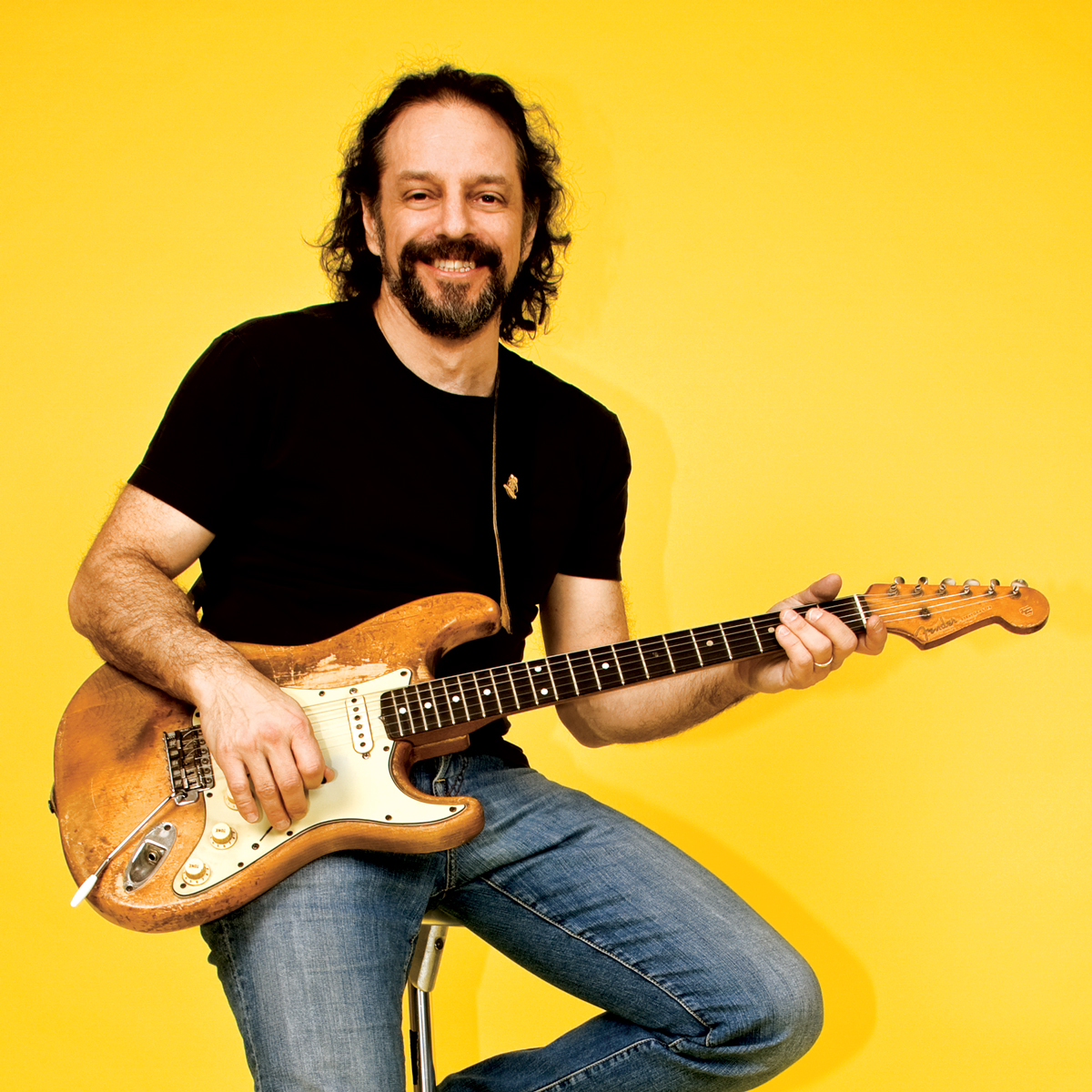Freddie King lesson: go in deep with a blues guitar legend
King's hard-driving intensity gave his guitar lines and solos a fiery spirit
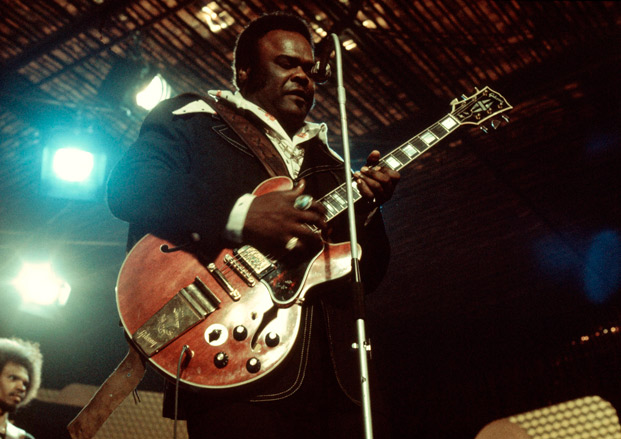
Freddie King is among the triumvirate of the greatest and most influential electric blues guitarists ever, revered with equal respect alongside the legendary blues gods B.B. King and Albert King.
Together, they are often referred to as The Three Kings - all complete masters of their craft and essential subjects of study for any inspiring blues guitar enthusiast.
In this edition of In Deep, we'll examine a few of the trademark Freddie King-isms that have earned him his rightful place as the forefront of electric blues guitar.
Of the three Kings, Freddie had a hard-driving intensity that gave his guitar lines and solos a fiery spirit. And though he was blessed with what were arguably the most powerful vocal pipes of the three, he distinguished himself as a player and composer by penning the greatest blues guitar instrumentals in the genre’s history, such as the classic masterpieces Hideaway, The Stumble, Sen-Sa- Shun, San-Ho-Zay, Side Tracked, In the Open, and many others, all songs that have been covered brilliantly by such blues-rock heroes as Eric Clapton, Jeff Beck, Johnny Winter, ZZ Top and Stevie Ray Vaughan. Freddie King was born as Frederick Christian on September 3, 1934.
Though his mother’s maiden name was King, in his early days as a performer he was thought to have changed his last name to King to align himself with B.B. King, then a rising star of blues guitar. His earliest records are credited to 'Freddy,' but by 1968 he changed the spelling to 'Freddie.' His recording career began in 1956, and by 1960 he had recorded the soon-to-be hit songs Have You Ever Loved a Woman?, Love Her with a Feeling and the instrumental smash Hideaway, covered brilliantly by Eric Clapton with John Mayall on the Blues Breakers album, recorded in 1966.
Early photos of King show him playing a mid-Fifties Gibson gold-top Les Paul with P-90 pickups, which he used along with a Gibson GA-40 amplifier. Shortly thereafter, he switched to his trademark Gibson ES-345 guitars, cranked to massive volume through Fender Quad Reverbs.
He picked with his fingers, using a plastic thumb pick along with a metal index-finger pick, and his string gauges were very unusual: the top three string gauges were .010, .011 and .012 - very light for the B and especially the G - while the wound strings were normal light-medium-gauge electric strings. King scored many early instrumental hits, the biggest being the aforementioned Hideaway, an easy-grooving 12-bar shuffle in E with a distinct, memorable melody.
All the latest guitar news, interviews, lessons, reviews, deals and more, direct to your inbox!
FIGURE 1 illustrates a similar melody played within the 12-bar form. As melodic lines are played on the top two strings with abundant use of open notes - akin to the country blues of Lightnin’ Hopkins - a rhythm part is equally attended to, built from palm-muted two-note forms on the bottom two strings and balanced against the melodic development. In bar 2 of the example, a simple open- to-second-fret hammer-on is replaced with a rolling hammer-on, wherein the middle finger is hammered onto the first fret, instead of the second, followed by a slide up to the second fret. (This more intricate technique was later adopted and employed frequently by Stevie Ray Vaughan.)
Throughout this example, notice the subtle inclusion of single-note phrases that serve to connect the elements of the part while keeping it moving forward. Freddie revisited this melody for another of his classic instrumentals, The Stumble. FIGURE 2 illustrates a similar form, which begins with a melodic line close to that of Hideaway but is played over a different chord progression, starting on the IV(four) chord, A, in the key of E.
In this 16-bar form, a descending sliding double-stop lick, based on a sixth interval, is played on the G and high E strings, executed by picking the G string with the thumb and the high E string with either the index or middle finger. Pick each pair sharply and in a staccato manner (short and detached), and strive for absolute accuracy as you move quickly down the fretboard.
Freddie showcased a similar lick in Hideaway, with a band breakdown (the band lays out from playing the groove, supplying accented chordal stabs only).
FIGURE 3 offers a lick along these lines, initiated with a very cool and unusual E7add2 chord voicing. The band comes back in at bar 5, over A, and, in this example, further melodic development is performed on the top two strings. A great example of King’s relentlessly hard-driving style is a song called Boogie Funk, essentially a one-chord vamp played in A. The roots of this song can be found in the John Lee Hooker classic, Boogie Chillen. FIGURE 4 presents a repeating riff, built around an A5 chord, that features muted- string accents along with subtle half-step bends on the low E and A strings.
This is played with a triplet feel, so what is written as eighth notes is intended to be played as a quarter-note/eighth-note combo within a triplet bracket. I use a pick to play this part, alternating evenly between downstrokes and upstrokes, but Freddie would fingerpick such a part, so try using the thumb for the downstrokes and the index or middle finger (or both) for the upstrokes.
In FIGURE 5, I add a melodic figure to the form. After building intensity by riding on the I (one) chord, Freddie would switch briefly to the IV (four) chord and play a similar rhythmic lick.
FIGURE 6 offers a part along these lines, to be performed with the pick hand in the same manner as FIGURES 4 and 5. These examples just scratch the surface of Freddie King’s genius, so dig deep into his catalog to discover even more for yourself.
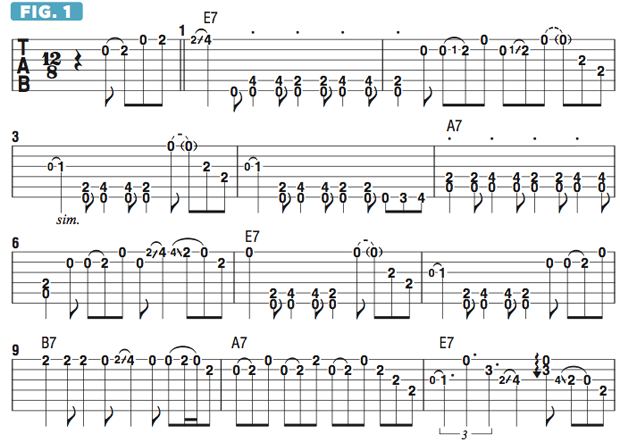
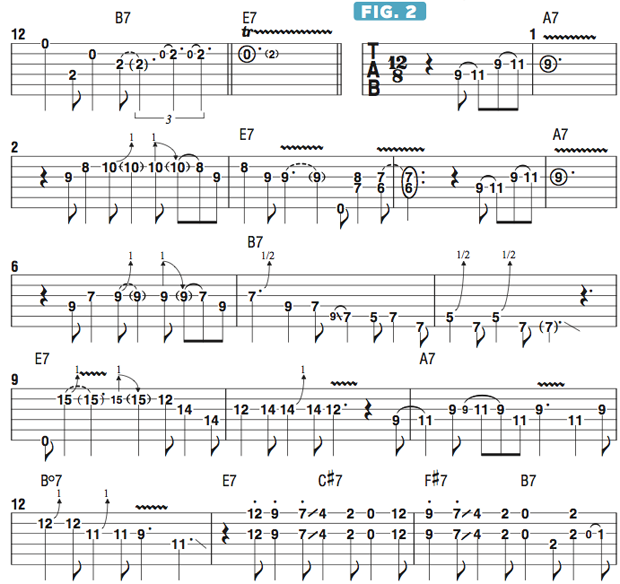

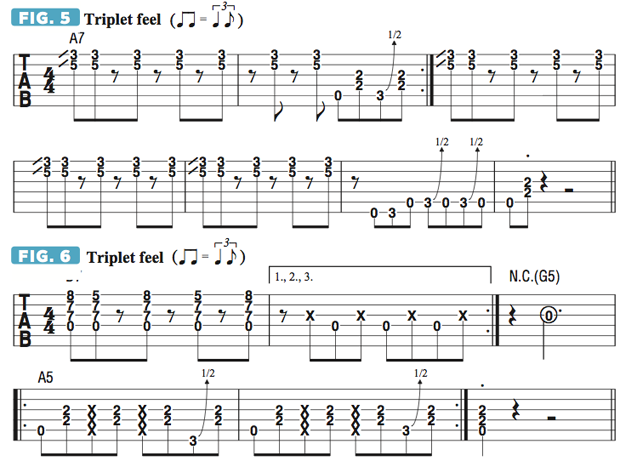
Guitar World Associate Editor Andy Aledort is recognized worldwide for his vast contributions to guitar instruction, via his many best-selling instructional DVDs, transcription books and online lessons. Andy is a regular contributor to Guitar World and Truefire, and has toured with Dickey Betts of the Allman Brothers, as well as participating in several Jimi Hendrix Tribute Tours.

